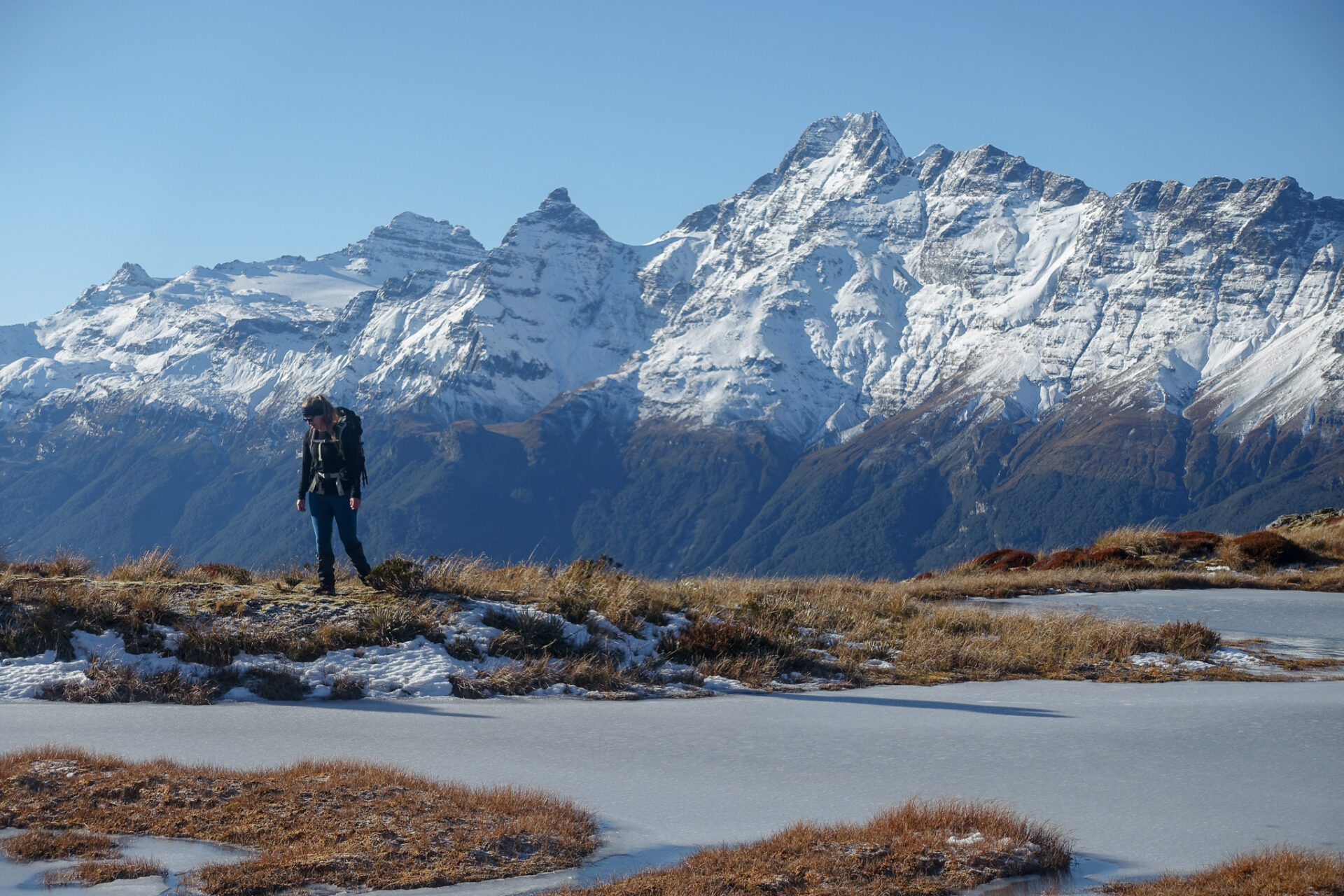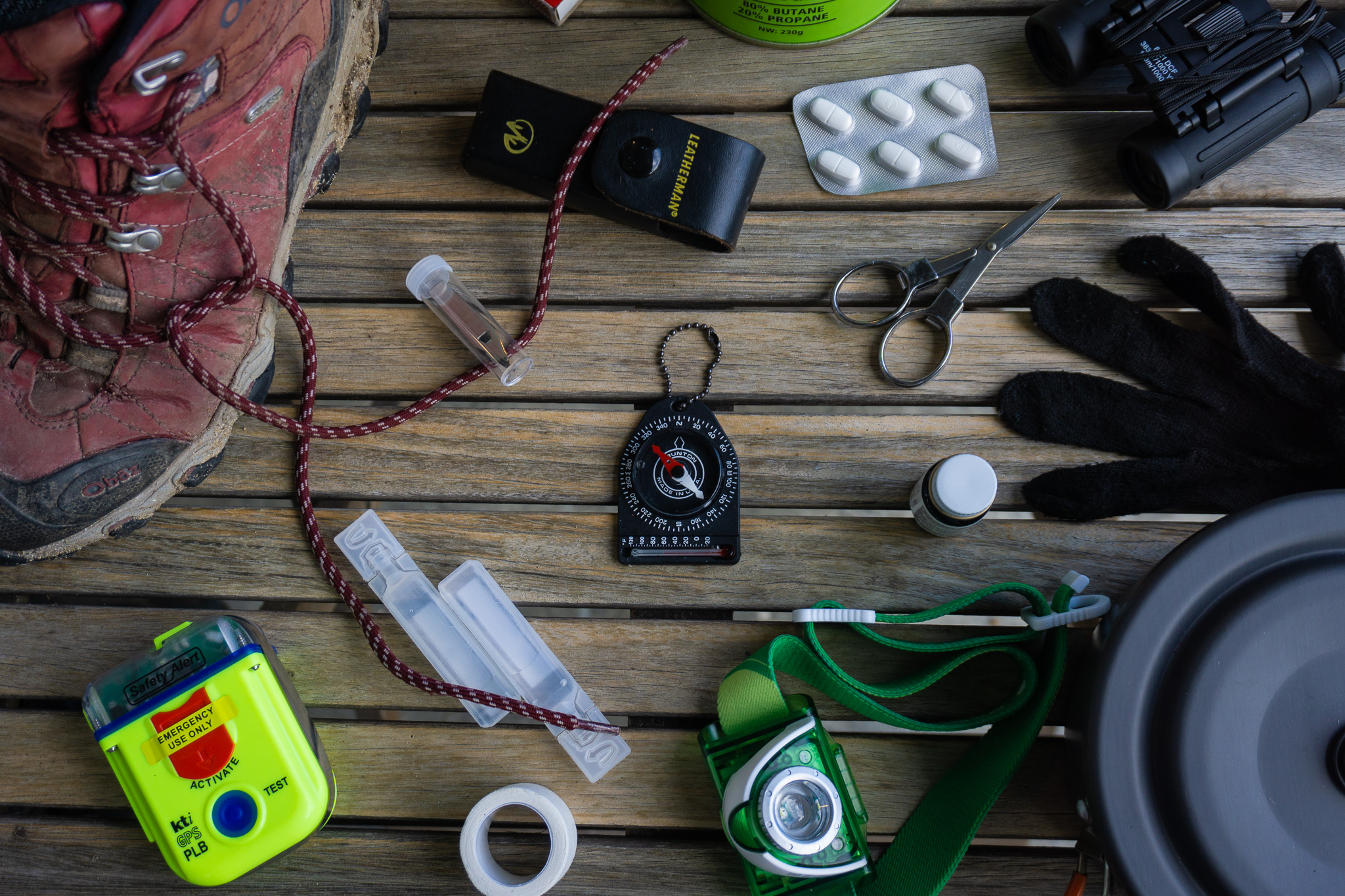Choosing a winter tramping trip in the South Island can be tricky. Many trips that are fine over summer become impassable in winter due to snow or avalanche risk. But there ARE plenty of trips that are still suitable for those hardy souls wanting to adventure in the colder months.
This article lists 11 (mostly) multi-day tramps in Te Waipounamu that have minimal or no avalanche risk in normal winter conditions. I’m not necessarily saying that winter is the recommended time of year to do these trips (e.g. in my opinion Abel Tasman and Queen Charlotte are more fun when it’s warm enough to swim). Just that it’s possible to do them in winter if you’re looking for some ideas that don’t involve snow or significant avalanche terrain.
Snow, ice, below freezing temperatures, short daylight hours and many other unique hazards are still present in winter. Tracks that are beginner friendly in summer can easily become ‘advanced’ in winter. Storms or above average snowfall can quickly render even these trips listed below too dangerous. Please do your research, know your own limits, and check with DOC for up-to-date information before heading out.
If you haven’t already, I’d recommend checking out my winter tramping tips blog post. This article has lots of helpful and practical advice to keep you comfortable and safe while tramping in winter.
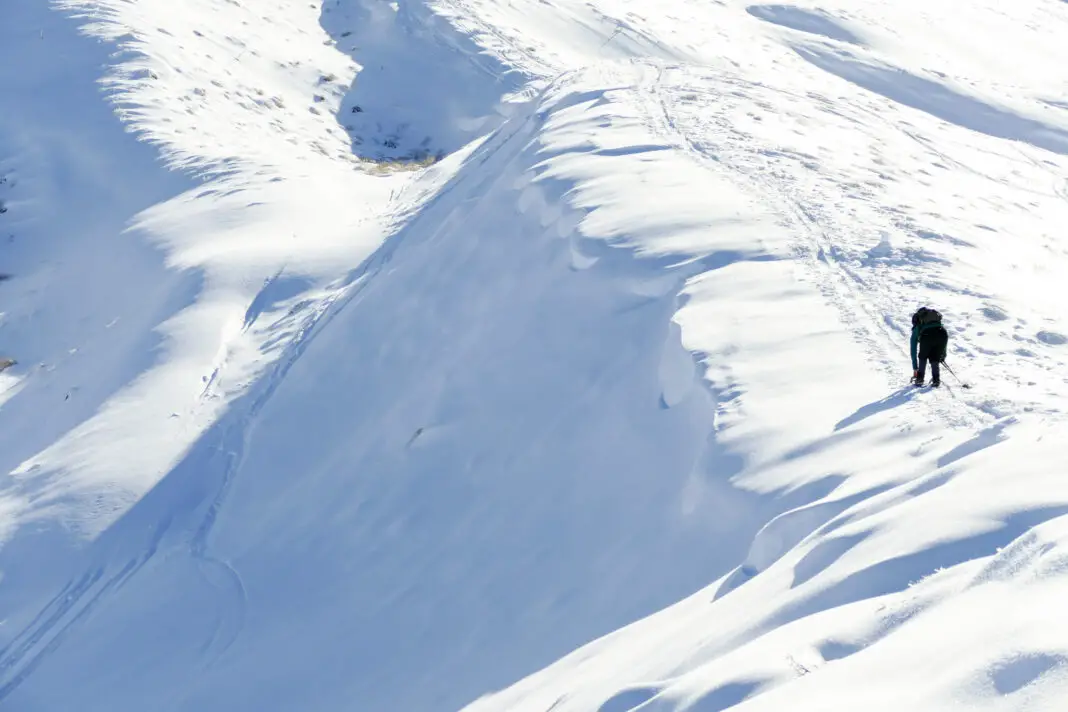
Winter Tramping Tips
Read this article for all the helpful tips and tricks when it comes to winter tramping trips!
Winter Tramping Trip Ideas:
Rakiura Track (Stewart Island)
North West or Southern Circuit (Stewart Island)
South Coast Track
Hollyford Track
Greenstone – Caples Loop
Woolshed Creek Hut / Mt Somers Track
Copland Track
Heaphy Track
St James Walkway
Abel Tasman Track
Queen Charlotte Track
Rakiura Track
The Rakiura Track is the only southern Great Walk that is a suitable winter tramping trip (the other three having significant avalanche risk). It normally takes three days, although it’s possible to tramp it more quickly given it’s only 32km.
It is rare for there to be snow to sea level on Rakiura, but not impossible. Although temperatures are slightly more clement than Central Otago for example, it can still drop below freezing overnight. So, like for all of these trips, you’ll still have to dress warmly and take appropriate gear.
Being Stewart Island, mud is a problem (mostly on the middle day of this tramp), but the cold keeps the people and sandflies away. So if you’re wanting peace & quiet with the chance to spot some amazing wildlife, this is the walk for you. Being a Great Walk it’s also relatively beginner friendly even in winter, so long as you have warm enough gear.
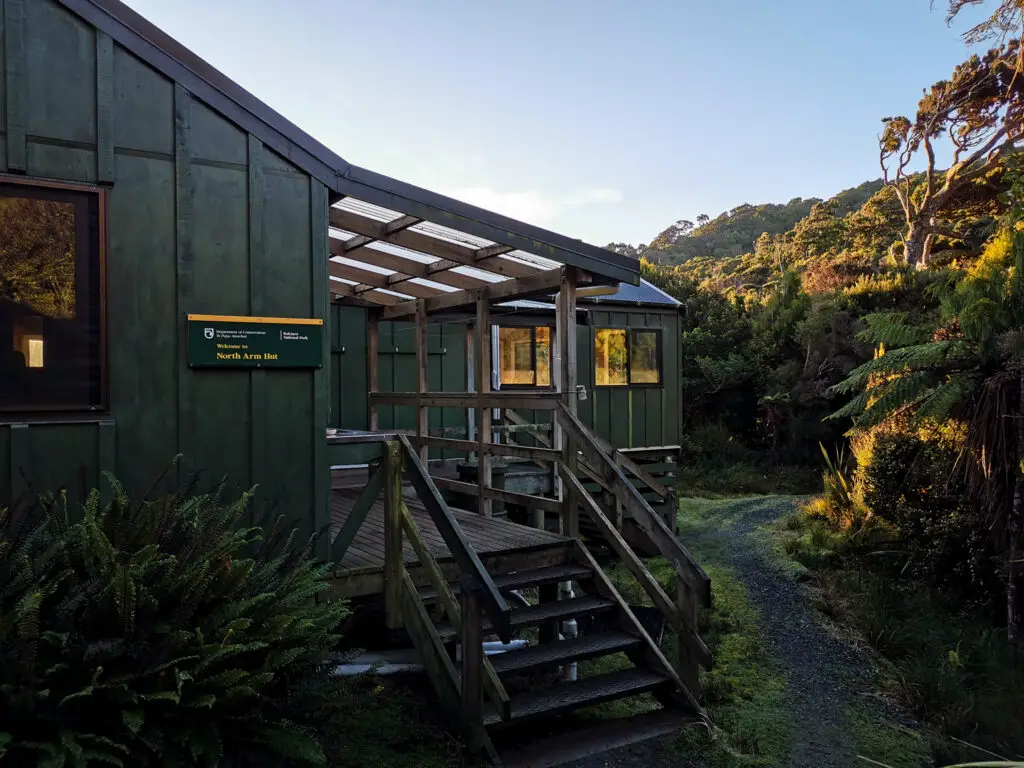
North West or Southern Circuit (or Mason Bay)
I’ve walked in to Mason Bay twice now and both trips have been unforgettable experiences, including seeing kiwi in the wild. But I’m yet to make it around the North-West or Southern Circuits on Rakiura. Both circuits are challenging 5-11 day trips that require significant experience, particularly in winter. Whichever one you choose, you’ll become very well acquainted with mud.
But the biggest factor if trying to complete the North West or Southern Circuit in winter would be the reduced daylight hours, combined with the aggressively amorous mud (present year round) and potential for flooding (particularly on the Southern Circuit).
These two circuits are definitely not for beginners. So if you’re after an easier trip that isn’t quite as beginner-friendly as the Rakiura Track above, then I’d always recommend Mason Bay.
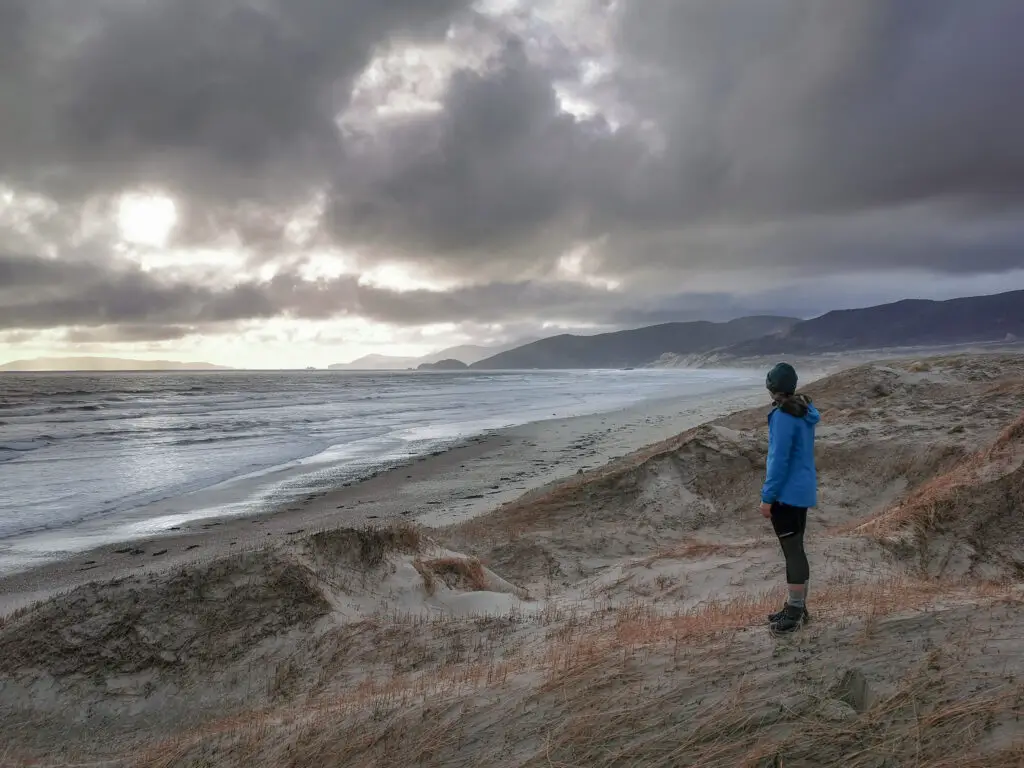
South Coast Track
The South Coast is another remote track which isn’t highly frequented. It takes a minimum of four days (if you organise jetboat transport). Or up to eight days if you go all the way in to the very unique Westies Hut and then turn around & walk back out again. There are some big distances on the first days (20km and 16km days), so physical fitness and awareness of short winter daylight hours would be crucial for this trip.
All of the large rivers are bridged, as are the most significant streams, although you still have to be aware of the tides and flooding. There is a large bog between Wairaurahiri & Waitutu Huts. Taking gaiters and even overtrou would be a good call.
But the first/last two days are pretty good quality track, sharing with the Hump Ridge Track, soon to be New Zealand’s newest Great Walk. So if you’re a fit beginner, even just doing an overnight trip to Port Craig would be nice.
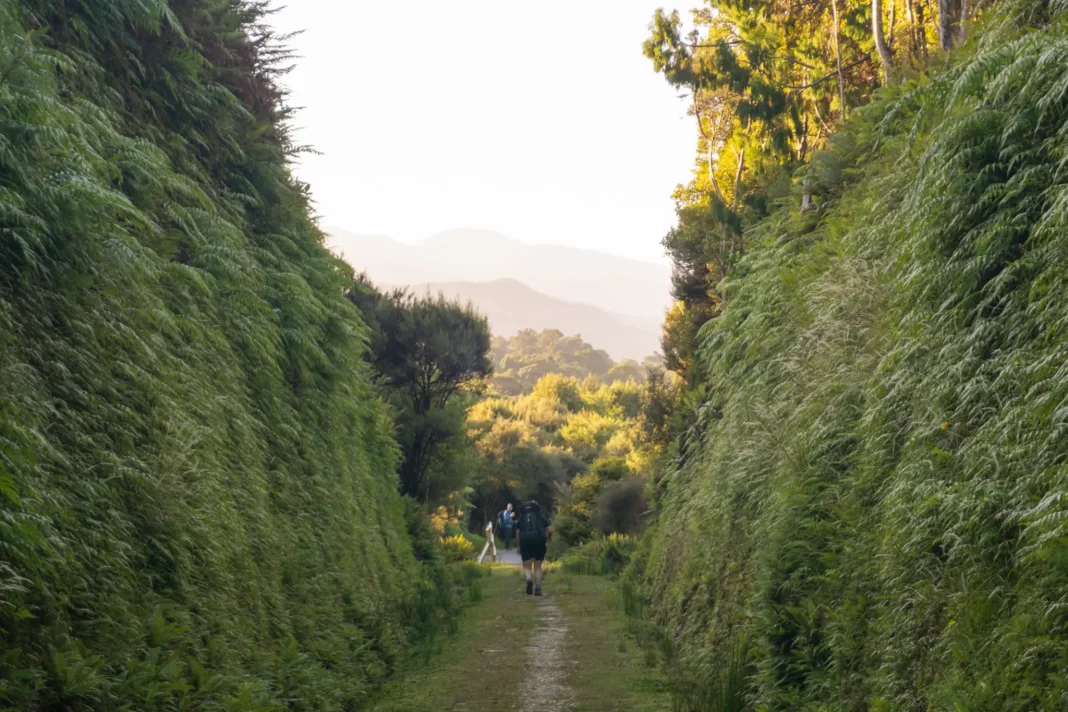
Hollyford Track
The Hollyford Track takes 4-8 days (depending on whether you fly into Martins Bay, packraft or jetboat down Lake McKerrow (summer only), or walk the whole track there & back again). It’s not a loop unless you combine it with Big Bay / Pyke Route which is more advanced and not as winter friendly. Transport isn’t routinely scheduled over winter, so you’ll have to contact the companies individually to charter transport.
The track stays low down in the valley the entire time with no avalanche risk. Travel can be slower in winter with mud, tree-fall, and ice / snow slowing you down (plus a few three-wire bridges!). The track on either end of the walk are pretty much Great Walk level footpaths. But the Demon Trail along the shores of Lake McKerrow is a much more typical tramping track; narrower with slippery roots.
For beginners or those just wanting a shorter walk, walking in to Hidden Falls or Lake Alabaster Huts makes for a nice winter tramping trip while avoiding the harder Demon Trail.
Greenstone – Caples Loop (or Mavora Walkway)
Greenstone-Caples is a beautiful alternative to the more popular Routeburn Track just one valley over. And unlike the Routeburn, it doesn’t usually become impassable in winter!
There is some avalanche risk in certain parts of the Greenstone (around Slip Flat) and over McKellar Saddle. Travel can be slow in the open valleys depending on how low the snow level is. Definitely check with DOC before you head out for accurate information.
The Greenstone-Caples loop takes 3-4 days depending on which huts you choose to stay in. Check out more info here. You can also combine the loop with the Mavora Walkway. This is also a winter-friendly track and much less busy in winter (it forms part of the Te Araroa so can be very busy during the TA season).
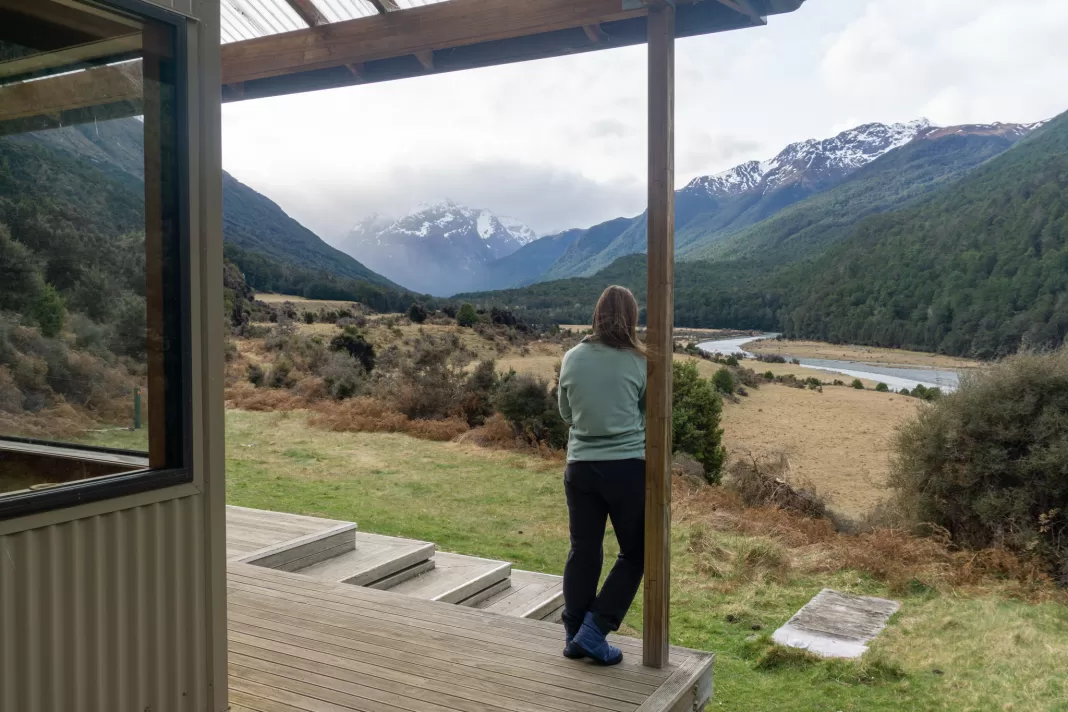
Woolshed Creek Hut / Mt Somers Track
Woolshed Creek Hut is a great overnight trip in Canterbury, popular with families and beginner trampers in summer. There are two main access tracks: the Miners Track (1.5-2 hours one-way) and the slightly rougher / steeper Rhyolite Ridge (4 hours one-way). Snow and ice might be present in winter depending on conditions, which can make the track slippery, but there is minimal avalanche risk.
This trip can be turned into a multi-day tramp by continuing on to the Pinnacles Hut (not to be confused with the hut by the same name in the Coromandel) along the Mt Somers Track, which circumnavigates the 1,688m peak. The track past Woolshed Creek Hut is rougher (particularly the third day out to Sharplin Falls carpark) and not as family-friendly.
Snow is more likely between Woolshed Creek Hut and Pinnacles Hut where the track climbs over a low saddle. The southern section between the two carparks (Sharplin Falls and Woolshed Creek carpark) can be very cold and icy in winter. I’d recommend having a car at either carpark (just don’t leave any valuables in parked cars).
Copland Track
The Copland Track is the only overnighter on this list (Woolshed Creek Hut aside), but I think it deserves a place! The track leads to Welcome Flat Hut, famous for its natural hot pools that make the 18km one-way trip well worth it. Having done this trip as a winter tramping trip once (read all about it here), I’d actually recommend booking out the Sierra Room (the old warden’s quarters) and staying two nights to really soak it all in.
There are avalanche paths that cross the track, but they are clearly marked with no stopping signs. All large streams except the first are bridged. But flooding is the biggest risk on this trip as the track sidles next to the Copland River for a significant distance and the first stream next to the carpark can quickly flood. It’s not recommended to go further up the valley past Welcome Flat Hut in winter as the avalanche risk significantly increases.
In my opinion, winter (when you have a dry forecast) is actually the best time to visit Welcome Flat Hut. Less people and less sandflies (in summer you need head-nets to keep them at bay if you want to soak in the pools).

Heaphy Track
The Heaphy Track, like the Rakiura and Abel Tasman Tracks, is one of the few Great Walks that is accessible all year round. It takes 4-6 days depending on which huts / campsites you choose to stay at. The track passes through a wide variety of terrain (but no avalanche risk). And you even have the chance of spotting takahē in the wild!
The Heaphy isn’t a loop and the trailheads are separated by an almost seven hour drive. You can either book a car relocation, shuttle transport or fly to/from Karamea on the western end (depending on the direction you chose to walk). Winter might restrict some schedules but, unlike in summer, you might have mountain bikers passing you, as bikers are allowed on the track May – November. The positive spin is that this means that transport businesses don’t close entirely for winter like for other tracks.
If you don’t want to do the whole track, a popular overnight trip is to go in to Heaphy Hut on the west side and back out again.
St James Walkway
The St James Walkway is a five day trip through mostly subalpine valleys. In summer it’s considered a beginner-friendly multi-day tramp, but in winter it can be more challenging depending on weather and daylight hours. The valleys can become very cold and frosty in winter.
There is some avalanche danger on the walkway, particularly in the Ada Valley. However all avalanche paths are marked with signage. Most large streams are bridged, but there are some smaller unbridged crossings which would be more dangerous after heavy rain.
The walkway isn’t a loop, but you can book a shuttle (winter might reduce their schedules), car relocation or try hitching.
Jules has a great blog post on walking the St James Walkway in winter here. And big thanks to Shoshannah for the photo! (Shoshannah took her two kids on an epic trip along the St James Walkway on her own, what an amazing mum. Check their adventure out here.)

Abel Tasman
The Abel Tasman is one of my favourite Great Walks outside of the Fiordland trio. And it makes a great winter tramping trip! There are three DOC huts and many, many campsites to choose from depending on how many days you want to split the trip into.
Water taxis still run over winter (although with a slightly adjusted schedule) to make day trips / smaller multi-day trips easier. However reduced daylight hours means you’ll to check the two tidal crossings carefully. Low tide might be before dawn and after dusk depending on the day, so check carefully when planning your dates, just in case.
The sandflies, wasps and hordes of people that can plague Abel Tasman in summer are all gone in winter (but the pesky weka remain, watch your gear!). So as long as you don’t mind colder temps, it’s a great time to tackle this Great Walk.

Queen Charlotte
The Queen Charlotte Track takes 3-5 days through the picturesque Marlborough Sounds. There are no DOC huts, but there are DOC campsites (which need booked, even in winter), as well as paid accomodation options. A fee is needed to cross private land (costs differs depending on amount of days).
Like most of these tracks, the Queen Charlotte is less crowded in winter (it forms part of Te Araroa so can be busy in summer). The track can be muddy but all majors streams / rivers are bridged.
And similar to the Abel Tasman, water taxis can take trampers where they need to go (it’s recommended to start at Ship Cove which requires water transport). Plus water taxis can also transfer packs if needed. There is a list of operators here.
I hope this list has given you some ideas for winter tramping trips in the South Island. There are so many other trips that are still suitable in winter, so don’t let the colder temperatures stop you from enjoying the outdoors!
As always, please stay safe when you’re out exploring. Follow the Outdoor Safety Code:
- Choose the right trip for you (read my article on tramping safety, talk to DOC)
- Understand the weather, particularly in winter
- Pack warm clothes and extra food (check out my post here about what gear you need to take)
- Share your plans and take ways to get help (have an emergency beacon on your person)
- Take care of yourself and each other
Take a look at my Tramping 101 series which includes this post about how to stay safe in the outdoors.
Stay safe and get outside!
